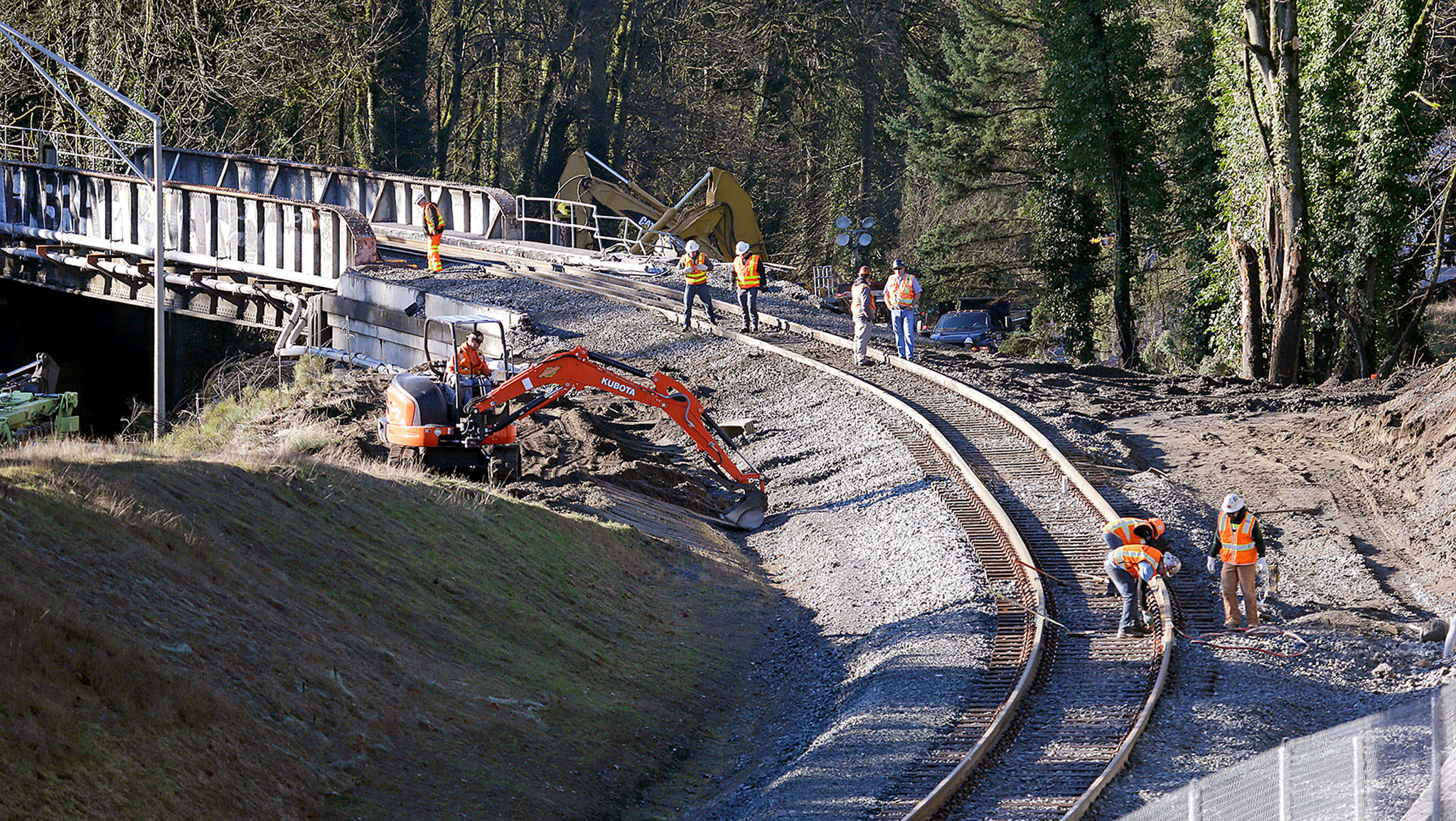By The Herald Editorial Board
It’s likely going to be some time before we have the official word on what caused Amtrak Cascades train No. 501 to derail above I-5 near DuPont on Dec. 18, killing three people and injuring more than 100 others.
And the delay by the National Transportation Safety Board mirrors the problem with the state and federal governments’ slow roll toward upgrading and maintaining the nation’s transportation infrastructure.
In a Dec. 31 commentary in The Hill, a retired NTSB railroad and rapid transit accident investigator, Russell Quimby, writes that investigations that took nine months to complete when he first began with the agency 20 years ago now routinely take two years or longer before a final report is published and its findings released.
That’s justified by the NTSB, Quimby said, in the interests of thoroughness, although that level of detail isn’t always delivered. And in the interim, he writes, “the public is left guessing.”
Investigators typically work quickly during the “field phase,” the former NTSB safety engineer said, with the facts consolidated into a single report within months. But things slow from there to allow public hearings and reviews by upper-level managers.
The issuance of a preliminary report by the NTSB — released with the understanding that a full report is pending — would at least allow the public and policy makers some information from which to begin making necessary changes.
Until then, we’re left with hearsay, although some of what we do know draws a fairly clear picture of factors — including apparent human error and mismanagement and relaxed safety deadlines — that contributed to the deadly train wreck that occurred when the train rounded a curve with a 30-mph speed limit at 78 mph.
One of those factors, writes Quimby, is alleged by members of the railroad workers union, who claim there was a rush to train as many engineers as quickly as possible for the new high-speed Amtrak route, which derailed on its inaugural run.
Route qualification runs, sometimes with as many as six engineers in a cab designed for two people, took place primarily at night, which didn’t allow for engineers to make note of daytime landmarks during their training. And because of the crowded conditions, engineers weren’t getting the undivided attention necessary to familiarize themselves with the route, he said.
The fault there may rest specifically with the state Department of Transportation, which subsidizes and operates the Cascades route.
Likewise, the state’s decision in how to prioritize about $800 million in Obama-era transportation infrastructure funding also may have contributed to the derailment.
The Seattle Times reported Jan. 2 that state officials decided against an admittedly costly project that would have straightened the curve near DuPont and allowed for higher speeds. But such a project, which would have carried tracks along an elevated structure above I-5, would have cost $412 million, rather than the $181 million that was spent to upgrade the 14.5 mile section of track between the Tacoma Dome and DuPont. Instead, that money was spread throughout the Western Washington rail corridor, including projects to limit mudslides near Mukilteo, which were necessary for route reliability.
Those decisions in budgeting finite funds weren’t necessarily wrong. But what may have been wrong was in not waiting to inaugurate the new route until a fail-safe system was in place to account for human error. The new high-speed route, which includes sections and at-grade crossings that are not “high-speed,” is not covered by a technology called Positive Train Control.
Positive Train Control uses GPS to determine a train’s position and speed relative to sections where engineers need to reduce speed. PTC warns an engineer when speed needs to be reduced and will automatically apply the brakes if the engineer does not respond in time.
Congress mandated PTC for all railroads, following a 2008 train accident in California that killed 25 people, giving the railroads until 2015 to complete the work. PTC is not foolproof; it can’t, for instance, stop a train from hitting an obstacle on the tracks, such as a vehicle or pedestrian at an at-grade crossing. But it likely would have prevented the Dec. 18 derailment and a 2015 Amtrak derailment that killed eight people in Philadelphia.
But at the request of railroads, private and public, who said they couldn’t meet the Dec. 31, 2015 deadline, Congress agreed to push the requirement to the end of this year. And until the derailment, state transportation officials were content to begin service on the new Amtrak route before PTC was available there. Officials have now suspended the new route until the fail-safe is in place, returning Amtrak Cascades to its route along the Pierce County waterfront until later this year.
And there’s little hope for significant rail safety and infrastructure improvements from the Trump administration, despite President Trump’s talk of such investments. His administration’s 2018 budget would cut $630 million — or 45 percent of funding — from Amtrak; another $928 million from the Capital Investment Grants program, which supports rail and transit projects; and eliminate the $500 million Tiger grants program, which provides federal grants that encourage state and local funding of transportation projects, as outlined in a recent New York Times editorial.
A report from the NTSB isn’t necessary to realize the dangers created in a collision of human error, a lack of commitment to investment, lax management and fudged deadlines.
Talk to us
> Give us your news tips.
> Send us a letter to the editor.
> More Herald contact information.

























